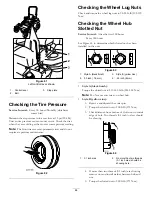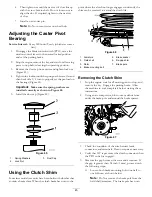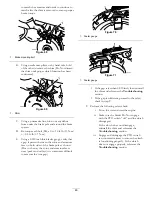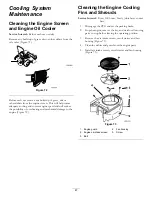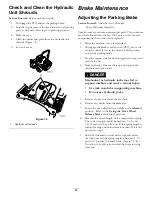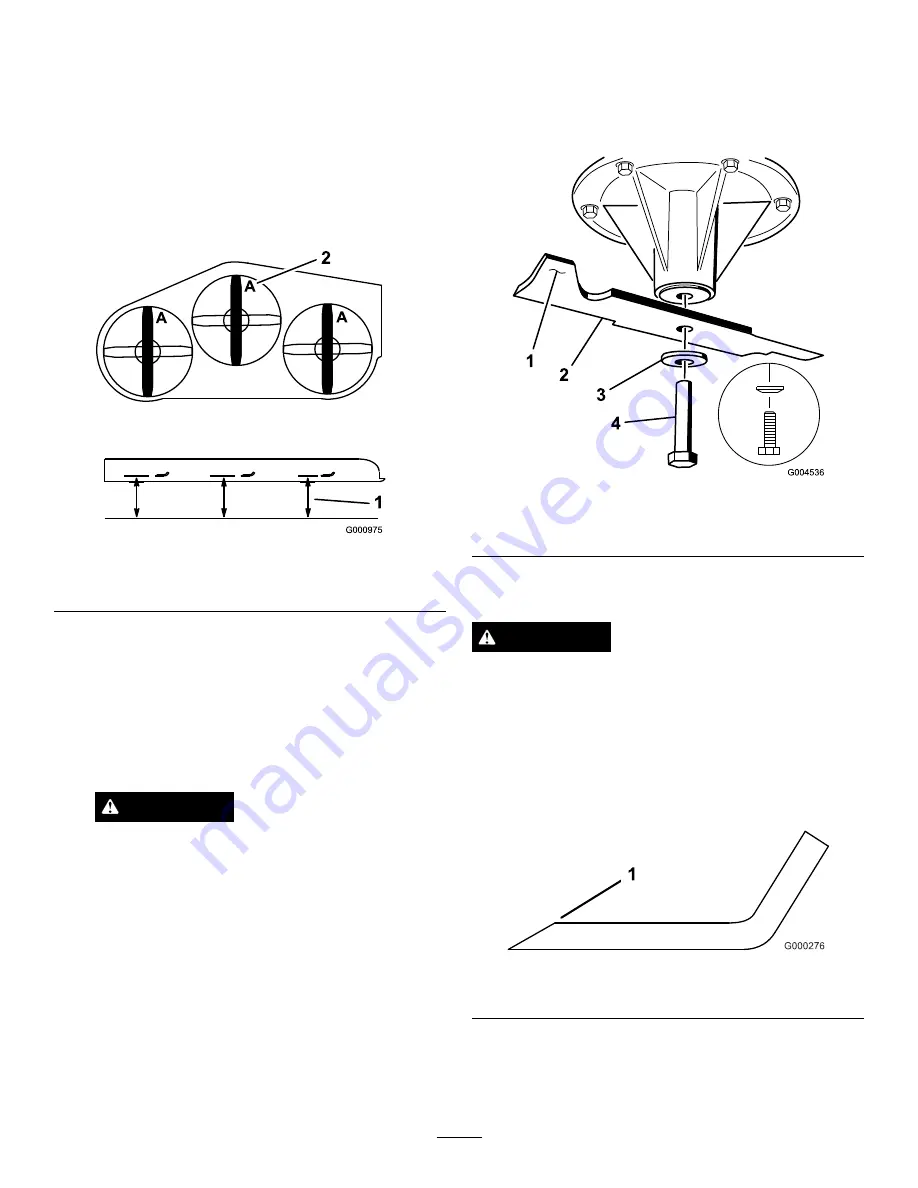
Checking for Bent Blades
1.
Disengage the blade control switch (PTO), move the
motion control levers to the neutral locked position
and set the parking brake.
2.
Stop the engine, remove the key, and wait for all moving
parts to stop before leaving the operating position.
3.
Rotate the blades until the ends face forward and
backward (Figure 94). Measure from a level surface to
the cutting edge, position
A
, of the blades (Figure 94).
Note this dimension.
Figure 94
1.
Measure here from blade
to hard surface
2.
Position A
4.
Rotate the opposite ends of the blades forward.
5.
Measure from a level surface to the cutting edge of
the blades at the same position as in step 3 above.
The difference between the dimensions obtained in
steps 3 and 4 must not exceed 1/8 inch (3 mm). If this
dimension exceeds 1/8 inch (3 mm), the blade is bent
and must be replaced; refer to Removing the Blades
and Installing the Blades.
WARNING
A blade that is bent or damaged could break
apart and could seriously injure or kill you or
bystanders.
•
Always replace bent or damaged blade
with a new blade.
•
Never file or create sharp notches in the
edges or surfaces of blade.
Removing the Blades
Blades must be replaced if a solid object is hit, if the blade is
out of balance or is bent. To ensure optimum performance
and continued safety conformance of the machine, use
genuine Toro replacement blades. Replacement blades made
by other manufacturers may result in non-conformance with
safety standards.
1.
Hold the blade end using a rag or thickly-padded glove.
2.
Remove the blade bolt, curved washer, and blade from
the spindle shaft (Figure 95).
Figure 95
1.
Sail Area of Blade
3.
Curved washer
2.
Blade
4.
Blade Bolt
Sharpening the Blades
WARNING
When sharpening blade, pieces of blade could be
thrown and cause serious injury.
Wear proper eye protection when sharpening blade.
1.
Use a file to sharpen the cutting edge at both ends of
the blade (Figure 96). Maintain the original angle. The
blade retains its balance if the same amount of material
is removed from both cutting edges.
Figure 96
1.
Sharpen at original angle
2.
Check the balance of the blade by putting it on a blade
balancer (Figure 97). If the blade stays in a horizontal
position, the blade is balanced and can be used. If the
blade is not balanced, file some metal off the end of
58
Summary of Contents for 74901 Z Master 5000
Page 66: ...Schematics Wire Diagram Rev A 66 ...
Page 67: ...Notes 67 ...

